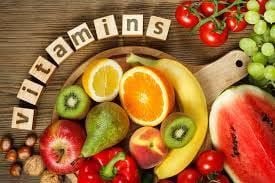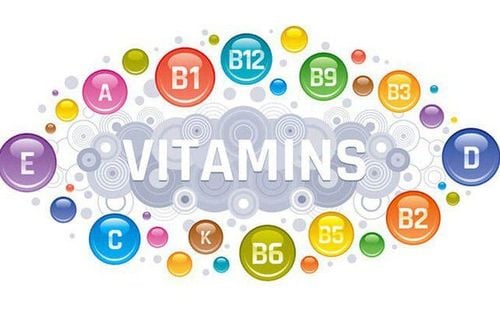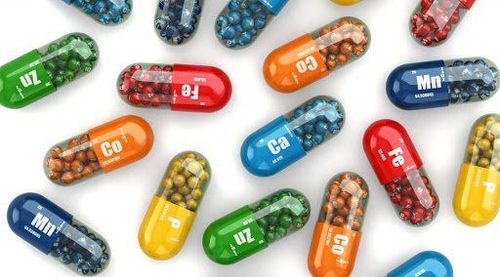This is an automatically translated article.
Posted by Doctor, Doctor Ho Thu Mai - Head of Nutrition Department - Vinmec Times City International Hospital
Vitamins are a group of organic substances that the body cannot synthesize on its own to meet the daily needs. Vitamin deficiency will cause many important metabolic disorders, affecting development, health and causing specific diseases. Based on their solubility, vitamins are divided into two groups: fat-soluble vitamins and water-soluble vitamins. Fat-soluble vitamins include vitamins A, D, E, K. Water-soluble vitamins include B vitamins and vitamin C.
1. Vitamin A (Retinol)
Vitamin A exists in the body in 3 main forms: retinol, retinal and retinoic acid.1.1. The role of vitamin A
Vision: The most important function of vitamin A is its role with the retina of the eye. Involved in the development process: When the body is deficient in vitamin A, the growth process is stopped. Early signs of vitamin A deficiency are loss of appetite and weight loss. Vitamin A deficiency makes bones softer and thinner than usual, the calcification process is disordered. The developmental function of vitamin A is assumed by retinoic acid. Cellular differentiation and immunity: Osteocyte development and differentiation is a prime example of the role of vitamin A. Many abnormalities in structural changes and cell and tissue differentiation due to vitamin A deficiency are known for a long time, such as: keratinization of epithelial cells, dry, stiff cells. The tissues most sensitive to vitamin A are the skin, respiratory tract, salivary glands, eyes, and testicles. Keratinization of the corneal epithelium can lead to dry eyes and ulceration. Retinoic acid is involved in the differentiation of embryonic cells, from germ cells into various body tissues such as muscle, skin and nerve cells. In addition, vitamin A is also involved in reproductive function.
1.2. Vitamin A requirement
According to the recommended nutritional needs for Vietnamese people, the need for vitamin A for adults is 600 mcg/day, pregnant and lactating women is 800-850 mcg/day, children from 6 months to 6 months age is 400-450 mcg/day. Currently, the new recommendation is 1RE (retinol equivalent) = 12 beta-carotene = 24 other carotenoids. Absorption of beta-carotene (found in foods of plant origin) is also affected by some other components in the food such as protein, dietary fat and depends on different foods.
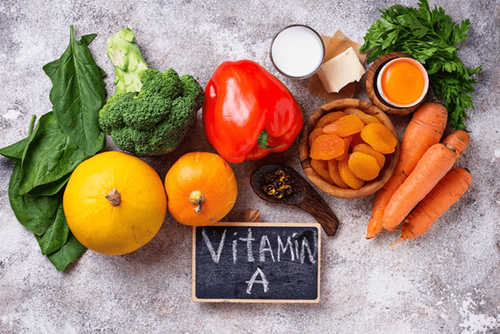
Nhu cầu vitamin A ở mỗi độ tuổi là khác nhau
1.3. Food source
Vitamin A is commonly found in foods of animal origin in the form of retinol, which is made from the carotenoid products of plants. The liver is the body's vitamin A storage organ, so the liver is a rich source of vitamin A. Accordingly, dark green, red and yellow vegetables contain provitamin A (Beta Caroten).2. Vitamin D (Calciferol)
Vitamin D exists in two forms, cholecalciferol (vitamin D3), found in foods of animal origin, ergocalciferol (vitamin D2) - artificially fortified in food, both forms are collectively known as calciferol.
2.1. The role of vitamin D
Regulates metabolism, absorption, reabsorption and binding of calcium. Acts as a hormone Regulates the function of some enzymes Participates in the secretion of insulin, parathyroid hormone Boosts immunity Develops reproductive system and skin
2.2. Vitamin D requirement
In fact, since a large amount of vitamin D is synthesized in the skin, it is difficult to assess the minimum dietary requirement for vitamin D. 400 IU/day is recommended for children and adults , pregnant and lactating women.
2.3.Food source
Food sources rich in vitamin D include eggs, milk, butter, and fish liver. Milk and dairy products are often used to fortify vitamin D. In addition, some other foods such as nutritional powders for children, processed foods, flour... are also used to fortify. add vitamin D.
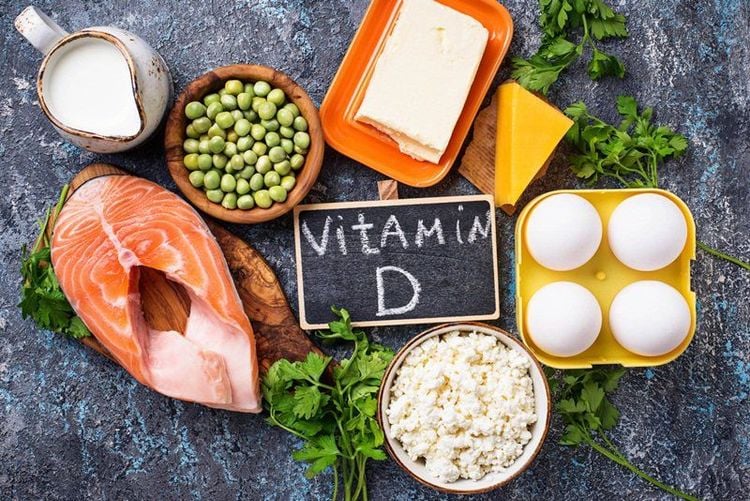
Một số nguồn thực phẩm chứa vitamin D tan trong mỡ
3. Vitamin E (Tocopherol)
Vitamin E is gaining more and more attention for its antioxidant function, in addition to its developmental and reproductive functions. Vitamin E includes 8 substances in nature, 4 belong to the group of tocopherols and 4 belong to the group of tocotrienols.
3.1. The role of vitamin E
Vitamin E is an antioxidant Immune function: Because it participates in the regulation of prostaglandins, controlling the clotting process of platelets. The metabolism of nucleic acids and proteins, the function of mitochondria, as well as the production of certain hormones.
3.2. Vitamin E requirement
Vitamin E requirements increase as dietary fatty acids increase, so vitamin E requirements can fluctuate up to 10 times due to the influence of fatty acids. About 40-60% of vitamin E in the diet is absorbed, the percentage of absorption gradually decreases when the diet is rich in vitamin E.
3.3. Food source
Food sources of vitamin E are vegetable oils (about 4mg/100g coconut oil, 94mg/100g soybean oil). The amount of vitamin E in cooking oil increases in proportion to the amount of unsaturated fatty acids. In animal fat, the amount of this vitamin is negligible.
Accordingly, vitamin E is relatively stable during cooking, but it will lose significantly when frying food. In addition, vitamin E is also easily destroyed when exposed to sunlight and oxygen in the air.
4. Vitamin K
Vitamin K is the term used to refer to a series of fat-soluble chemicals in the quinine group, including vitamins K1, K2 found in plant-based foods, and vitamin K3 which is a synthetic substance.
4.1.The role of vitamin K
Involved in blood clotting Increase calcium attachment to bones, muscles and kidneys
4.2. Vitamin K requirements
The daily requirement of vitamin K is about 1 mg/kg body weight/day.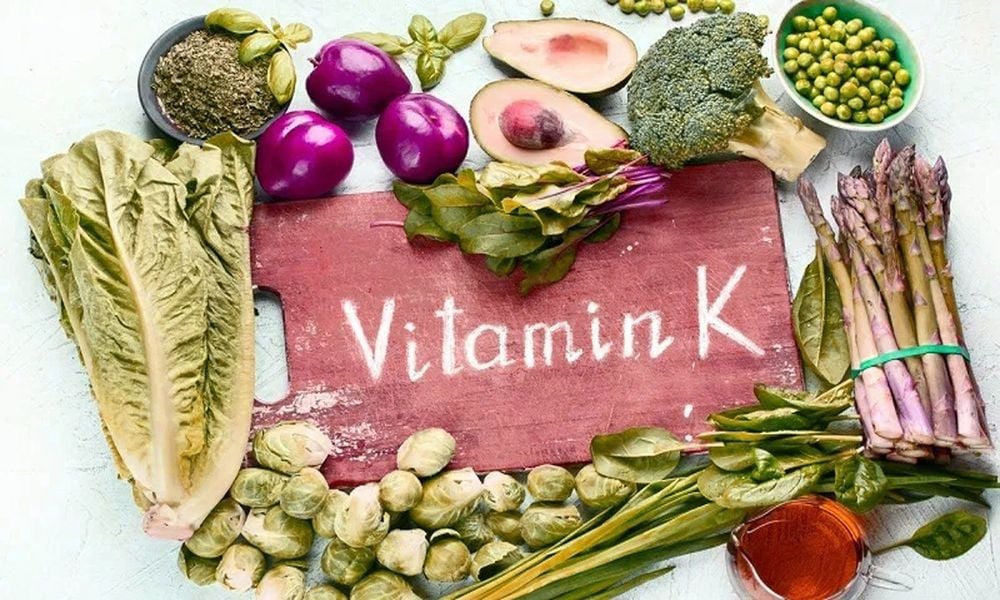
Theo các chuyên gia, nhu cầu vitamin K được tính theo số cân nặng của mỗi người
4.3. Food source
Foods rich in Vitamin K are dark green vegetables, cooking oil, liver, avocado. A large amount of vitamin K is synthesized by the beneficial bacteria in the intestinal tract. Vitamins are a group of organic substances that the body cannot synthesize on its own to meet the daily needs. Vitamin deficiency will cause many important metabolic disorders, affecting development, health and causing diseases. Accordingly, based on the roles and needs of the above vitamins, you should consider supplementing with food sources, in some cases supplementing orally, you should consult a doctor or pharmacist. and nutritionists.
Please dial HOTLINE for more information or register for an appointment HERE. Download MyVinmec app to make appointments faster and to manage your bookings easily.




